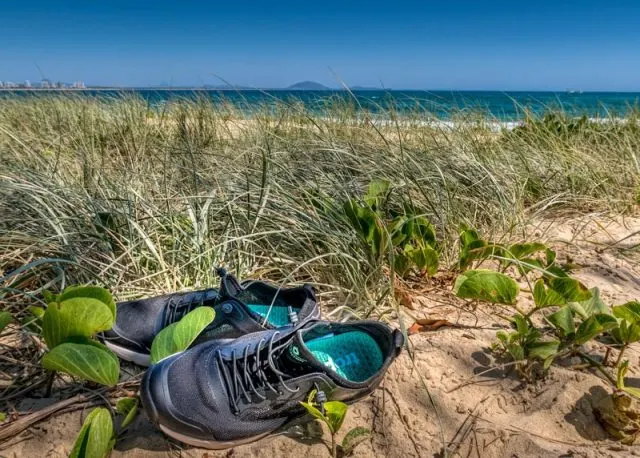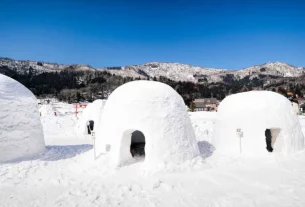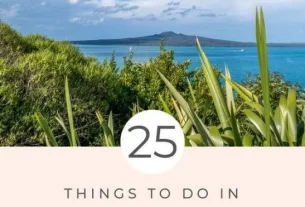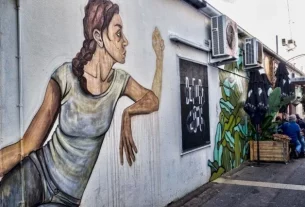Do you travel in Australia or are you planning a trip down under? We’re regularly asked for gear recommendations, what we’ve added and what we’ve culled from our travel kit over the years so we’ve compiled this list of our road trip essentials.
We’ve fine-tuned it over the past decade and hope it’s helpful to you as you head out on your adventures. Our purpose here is to share ideas, solutions we’ve found and challenges we’ve needed to overcome rather than selling any individual brands, often you will have something you can simply repurpose or move to your vehicle to meet a need but where we do have a particular favourite we’ve been using in our kit for a while I will mention or link it where available.
There have been more than a few lessons we’ve learned along the way so feel free to have a laugh at our mishaps, take onboard what’s useful and feel free to share your own experience or questions in the comments section below.

When we moved to Australia in 2007 we knew we wanted to explore it from tip to Tassie, Steep Point in the west to Cape Byron in the east. With such an enormous country to explore, we still have many key destinations and a lot of those spots to get to but it has been an incredible journey of discovery and not one we plan to stop any time soon.
For us right now, it seems an ideal time to focus on a deep dive into regional Australia. We’ve got an enormous list of destinations and travel research underway for the next 12 months and many trips under our belt already so it seemed a good time to put together this article sharing our road trip essentials gear guide.
Over the years we’ve added to our kit where there was a gap and decluttered ruthlessly where something just didn’t serve us any longer. We’ve compiled this list from our 15+ years of experience in Australia to include the big stuff and the small that you might want to think about whether it’s a weekender you’re headed off on or the big lap around the outside.
Table of Contents
The touring vehicle
Whether you live in Australia or are visiting from overseas you’ll find that getting around outside the major cities without a private vehicle of some form is really challenging. It will seriously limit what you get to see and do.
Our personal preference for touring is a 4-wheel drive but if you are planning to rent or a big vehicle isn’t practical for your daily life then they are not the only option. You can get into many of the places you are likely to want to go on sealed roads. It surprised me to learn that you can get all the way to Uluru, the heart of Australia on sealed roads but many routes are still unsealed so you’ll want to do some research before you hit the road.

It’s also quite possible to drive many dirt roads safely in a 2WD car. We took a Falcon Sport with a skirt and spoiler kit on dirt roads many times over the years but personally, I wouldn’t have wanted to do a really long trip that way. If you are hiring a car make sure you check the rules. There can be exclusions for travelling on dirt roads and on car ferries which can be expensive if you have a mishap operating outside of the rental rules.
A Toyota Landcruiser is probably the ultimate, we’ve driven and towed a caravan with one and it’s true, they are absolutely an ideal vehicle for that but they aren’t in the budget for many of us and there are plenty of alternatives. We decided on the Pajero Sport a couple of years ago and totally love it.
The driving position took a bit of getting used to after my little sports coupe but it is so comfortable for long days on the road. That extra road clearance and 4WD option just make everything less stressful, we’ll happily tow the right-sized van with it and it fits a heap of gear in the back.
Our internal vehicle hacks
The key to getting maximum enjoyment out of road-tripping has been getting the vehicle kitted up well so we can store what we need and get to it easily. It’s worth putting a bit of creative thought and ingenuity into it or investing in some of the simple additions that can make a long day in the car that touch more enjoyable.
I’m a bit on the shorter side so the addition of an Australian Merino seatbelt pad has made all the difference. It stops the webbing of the seatbelt from rubbing and cutting into my neck and being sheepskin it is comfortable in either hot or cooler weather.
Whether I’m packing into the car, caravan or suitcase I love my packing cubes. I brought good quality ones years ago and they have lasted the distance. We have sets of multi-sized cubes in two different colours making it easier to locate what we are looking for without tipping everything out on the floor in frustration.
We keep a set of bungee cords handy for locking everything down so it doesn’t move if you stop suddenly or travel on rougher roads.
I also keep a couple of large storage tubs or chub boxes that help keep smaller items together so you can quickly put your hands on what you are looking for. Colour coding or labels help you find what you want even faster.
The quick-access collection
Then there are those bits that are totally essential when you need them whether you have popped out for a few hours or a couple of months. Ideally, they are within arm’s reach from the front of the car. A few that I’d include here are:
- A couple of rubbish bags that are easy to access in transit. They roll up tiny and secure with a rubber band or hair tie that might or might not also be useful at some point.
- Sunglasses. While I will rarely leave the house without my sunnies having a pair that lives in the vehicle has been a trip-saver a couple of times now. If you wear prescription lenses they can be an older pair but a recent enough prescription that you can legally drive in them. It’s surprising how often the sun appears when least expected or you find you are stuck in traffic while headed home with the sun low on the horizon.
- The coin/cash stash. A coin purse or zip lock bag with coins or small notes that are easy to grab for stuff like market parking in small towns, the produce cart at the side of the road that has 4 good sized avocados for a dollar, yes that does still occasionally happen once you get out of the city and any other little incidentals.
- A reusable shopping bag is useful for any supplies you want to pick up along the way supporting local businesses and at the side-of-the-road stalls.
- Hot cups are always part of our kit. We use double-walled stainless steel ones that keep our drinks piping hot (or cold) for over 6 hours and never leak even when they’ve bounced around in the pack for hours, admittedly they are looking a bit scratched and dented at this point but they work as well as ever. I also love the ones below that were purchased from an artist at a market stall in Hervey Bay they keep the drink hot for around 2 hours and are great on an everyday basis.

- Hand sanitiser and/or wipes. It might have become a hot item recently but it’s something that has always been a part of our car kit and always will be. Travelling means often using public facilities and not always having optimal conditions. They are super handy to clean up before putting together your picnic or snacking on your road trip treats.
- Reusable water bottles are not only better for the environment but a big cost-saving. Tap water is safe to drink across Australia with the exception of some public taps you might see in places like National parks that say ‘non-pottable’ which just means it’s not suitable for drinking, cooking or washing things like eating utensils. It’s usually rain or bore water.
- Mints and ‘sucky’ sweets are another constant to freshen us up or offer a micro-break along the way. Hard sweets last much longer in a container in the car and are less likely to end up in a melted sticky lump.
- Any medications you might need throughout the day, either because they need to be kept on a schedule or something you might want incidentally like panadol or ibuprofen.
The esky or travel fridge
We call an icebox or cooler an esky in Australia, in New Zealand it’s a chilly bin, they are absolutely essential for the day-to-day, school lunches and picnics but the Waeco (travel fridge) takes that a step further if you are travelling any distance. It can be powered in your vehicle as you drive and at your destination, it plugs into mains if you have the option, and it can be set to not only refrigerate but freeze if you need it to and has a little thermal jacket that makes it even more efficient.

Food safety is a factor in the Australian climate, especially up in Queensland and the NT. I love to stock up at local producers and farm gates along the way and no one wants a boring picnic so that needs to be kept cold too. Once you get off the main stretch it’s often not practical to buy as you go. As an example, a great rainforest getaway that we love from Brisbane and the Sunshine Coast is the Bunya Mountains but you do need to go in self-sufficient with most of your food for the week.
A travel towel
I now keep one of our travel towels inside its pouch in the passenger door. Even if we aren’t planning on swimming it regularly gets pulled into service when we’ve been for an unplanned walk on the beach and want to wash off our feet before heading home, it works as a picnic blanket and gets added to our pack if we are hiking or walking.

This cute black and white travel towel is the Phoenix by Tesalate. The bonus of travel towels over typical beach towels is that they are much smaller and lighter to carry but they still absorb the water really well. The sand just shakes off this one and it dries much faster than a normal towel.
Sunhats
A sunhat is essential to protect from the burning sun and in the bush is highly recommended especially in summer for protection from ticks. I keep a soft Nike running cap permanently in the glove box so it’s easy to grab and a foldable travel hat with a wider brim gets packed when we’re going out for the day.
A soft warm layer for inside the vehicle
Turning on the heating can make you feel drowsy when driving so we’ll usually opt to pop on an additional layer if we get a bit cooler along the way. I like to have something that’s soft and a relaxed fit if possible for comfort and function. I often keep a thin merino wrap behind my seat so it’s easy to grab and the travel towel I mentioned in my door pocket is also soft and has been repurposed as a wrap or blanket a few times now. It’s been especially useful up in the hills where it can chill down suddenly in the afternoon.
Jackets for getting out and exploring
Depending on the season I might change out the jacket but most often a light waterproof jacket is stowed just for emergencies. It’s a single layer and folds up extra small into its own pocket making it my go-to option to leave in the car.

Over the winter I favoured a black windproof shell layer with a fleecy interior that I picked up at Wai-o-tapu Thermal Wonderland in Rotorua when I got caught short by a last summer cold snap in New Zealand. It was an absolute bargain for an emergency purchase in a tourist shop but it is perfect for our Queensland winter which doesn’t really get that cold in coastal areas. It rolls up quite compact and tucks neatly into the hood like you would with a ski jacket.
A comprehensive first-aid kit
Every car would ideally have a first aid kit but when you live in a city and only travel short distances to the shops, work or to drop off the kids it can be easy to overlook. When you are touring or taking a long-distance road trip in Australia it is absolutely essential that you have one and that it is comprehensively stocked with fresh ingredients. Saline solution and sterile dressings expire and tape loses its stick over time in the heat of the vehicle.

I have a full article I published some years back and recently updated on what to include in an Australian travel first aid kit but to recap a few of our essentials and some non-standard items that need to be added to most pre-made kits:
- Sunscreen. Goes without saying – the sun here is a killer, literally.
- Insect repellant. Mostly for comfort but the mosquito is the world’s deadliest animal and we do have some of those mosquito-borne diseases here in Australia.
- Elastic bandage. Handy if you have to walk back from a hike with a mildly sprained foot and it’s the primary first aid for snake bites. I consider it like a talisman or umbrella, by carrying it I hope that means I’ll never need to use it but if I do I’m prepared.
- Really sticky duct tape or wax strips. What don’t you need duct tape to fix? Plus if you’ve ever had a brush with the Australian stinging tree you’ll hope these aren’t far away. Even the faintest touch is incredibly painful. Drew was working on removing the microscopic barbs from his arm for weeks and he barely brushed the leaves of a young plant at the edge of the track. The tape or strips used as soon as possible are the most effective way of getting the little fibres out of the skin.
- A small bottle of vinegar. The acidity works for deactivating the sting and reducing the pain from jellyfish stings. Some people say the same works for wasps and bee stings.
Beach chairs and sunshades
I wouldn’t have listed these as essentials a decade ago but as I’ve got a few years older I don’t have an issue choosing comfort first. I also had the rather embarrassing situation of getting my butt stung by bull ants while sitting on a blanket at a beach park years ago so now I like to give them a respectful distance. If you are travelling for a while a comfortable but light and easy-to-carry camp chair is essential but I am seriously considering adding some low sand chairs for day trips to the beach.

With the Aussie sun, we also carry a sun shelter. For years we had a small flat flip-out but after one too many afternoons wondered if I was ever going to remember the secret manoeuvre to fold it back into its carry bag we upgraded to a Cool Cabana. It’s a great option when there is no natural shade available, it gives a heap of shade for the size and weight it packs down into, and it is durable and easy to put up and down.
Solid plans to stay caffeinated
Frequent rest stops help the driver stay refreshed and alert. Knowing you have a good coffee coming up makes it worth stopping. We use a variety of options to make sure we have a good brew waiting and don’t have to rely on a drive-through or garage.

We’ve mentioned hot cups above, we’ll usually leave home or our current base with a hot drink in those. Then there are drip coffee bags made with premium locally roasted coffee, if you haven’t tried them don’t write them off too hastily these are NOT the same as coffee bags.
Our third option is a portable espresso maker, the Nanopresso that we’ve written about previously that we use with coffee pods for easy cleanup and more recently the Staresso machine that we have been reviewing with our favourite Grounded Drops coffee. They are both small to pack in the car and light enough to take in the day pack. We like the opportunity to buy local and pick up a small bag of coffee from boutique roasters on our travels with these options.
Frequent driver reviver stops save lives so we consider good coffee a critical part of our road trip planning.
Footwear that is fit for purpose
Growing up as a Kiwi kid and now enjoying life as a Queenslander; bare feet, jandals or thongs have been the footwear of choice. As I’ve gotten a bit older I do appreciate a little more the work my feet do to keep up with my grand plans. While I am no shoe collector I have added a few shoes that are now an essential part of my travel kit that I may not always have found a place for.
On the subject of thongs, the Archies high arch thongs were my saviour while recovering from a year of plantar fasciitis pain and now there is always a pair in the car in a bag under the seat for when I need them and another at home.
I said goodbye to hiking boots years ago when I realised I was never going to find them comfortable and that my ankles were just as well supported with a good pair of hiking shoes. Now I’m never far from my Merrell Moab hiking shoes, they are so comfortable, maneuverable and grippy at the same time. Mud is less of an issue in most places we hike now and it turns out they are just as easy to clean as leather was.


The third essential shoe in my travel collection is a pair of all-terrain sneakers by Tropicfeel. I love my Monsoons in black, they look just like sneakers but they take you from the pavement to the beach to light trails and onto the reef. They have good grip, enough stability to comfortably go rock hopping and they are water-friendly.
They are perfect to swim or kayak in tropical waters where the risk of standing on a sharp piece of coral or a stone fish is higher, or just for scrambling in and out over the rocks. When you are done they dry fast and aren’t uncomfortable to wear wet after you’ve been for a swim under a waterfall. I’ve done a full review on these that covers why I love them for most of our road trip scenarios but also what they aren’t suitable for.
Identifying and refining our road trip essentials over time ensures we have the right gear on hand to enjoy our travel and everyday life while not weighing ourselves down with a whole lot of gimmicks that can be costly and unnecessary clutter.
Do you have a travel essential for the classic road trip that you’d add to this list? Leave your thoughts in the comments below.
If you found this article useful please consider saving it to Pinterest. It makes it easy for you to find it again, it helps us, and it helps other travellers to find the information they are looking for.



